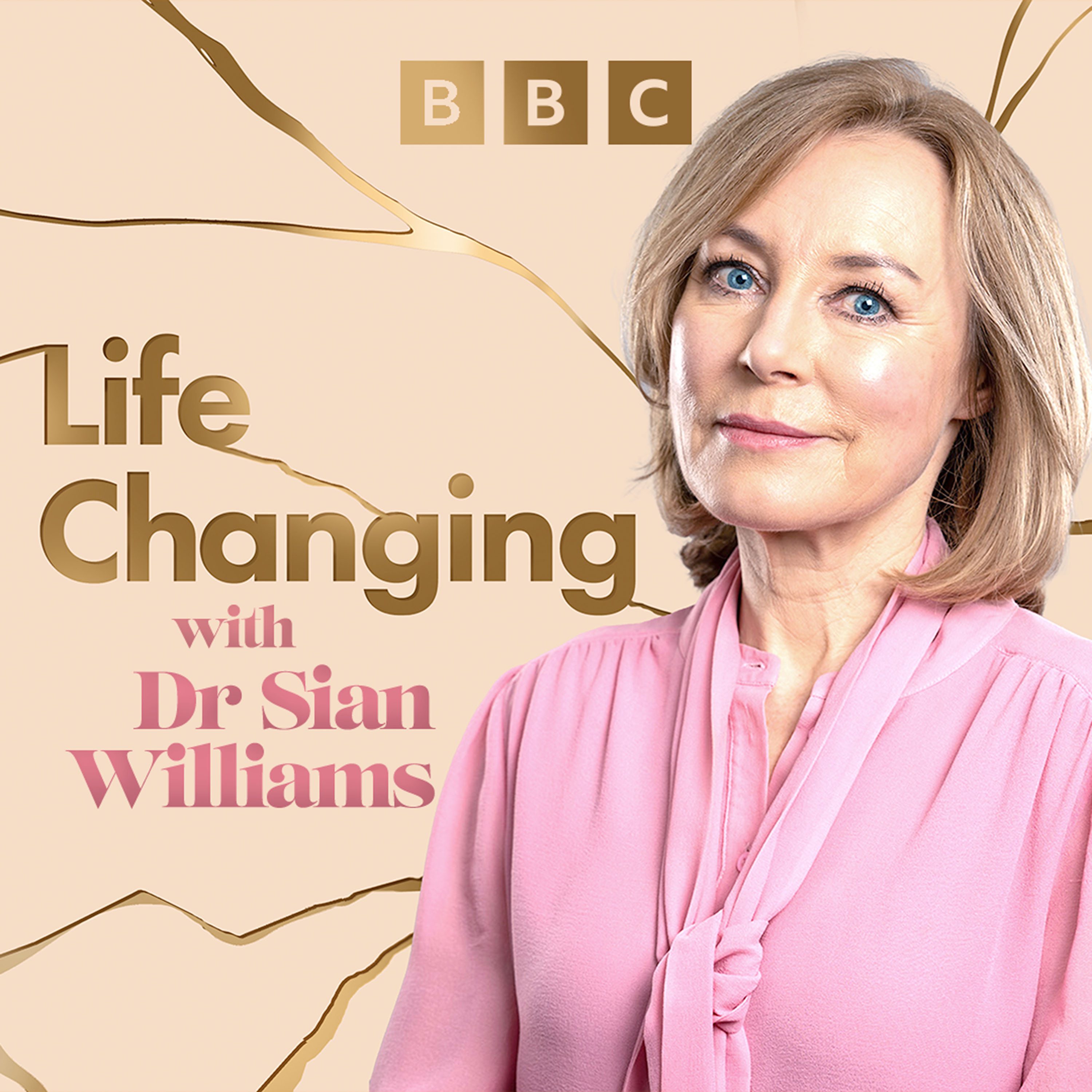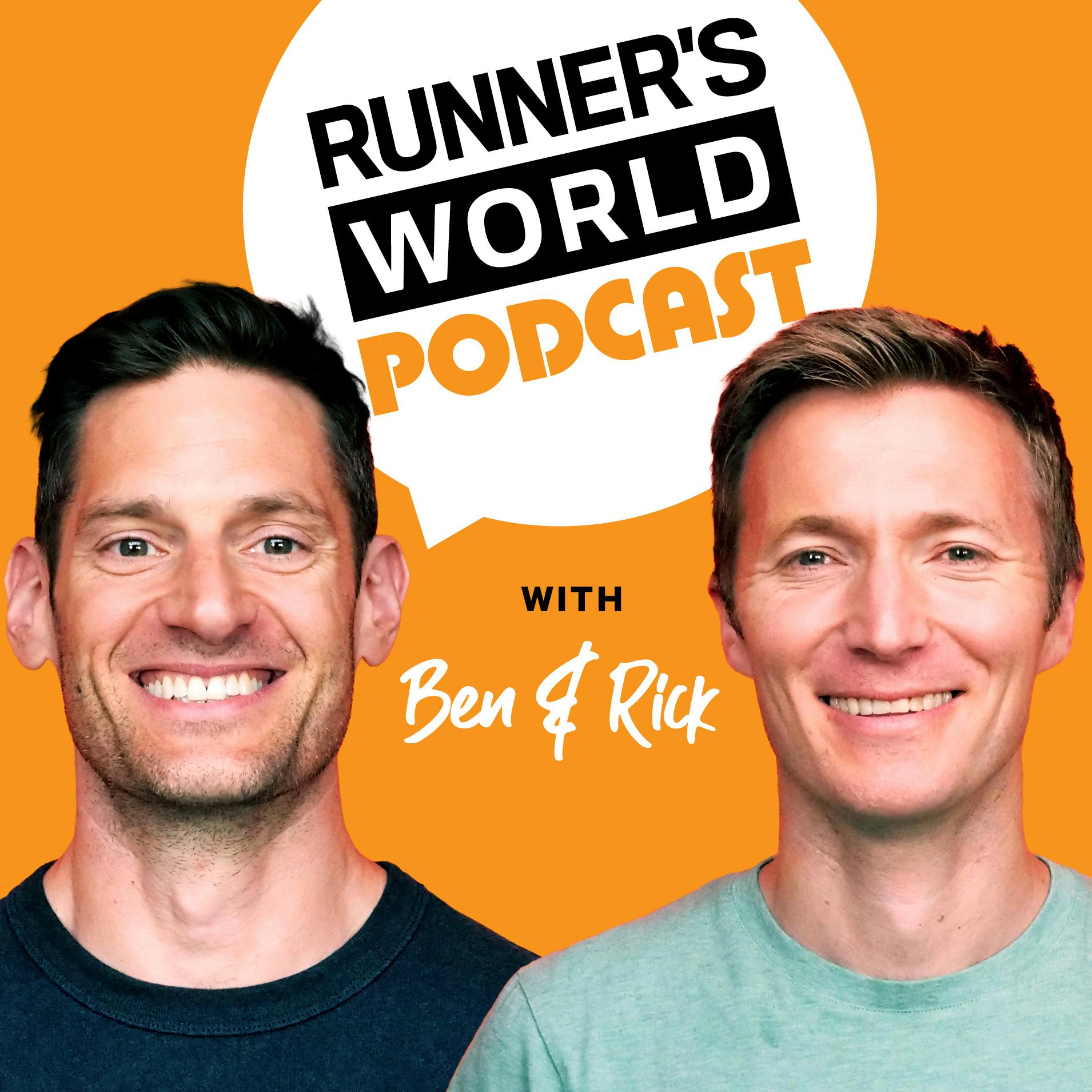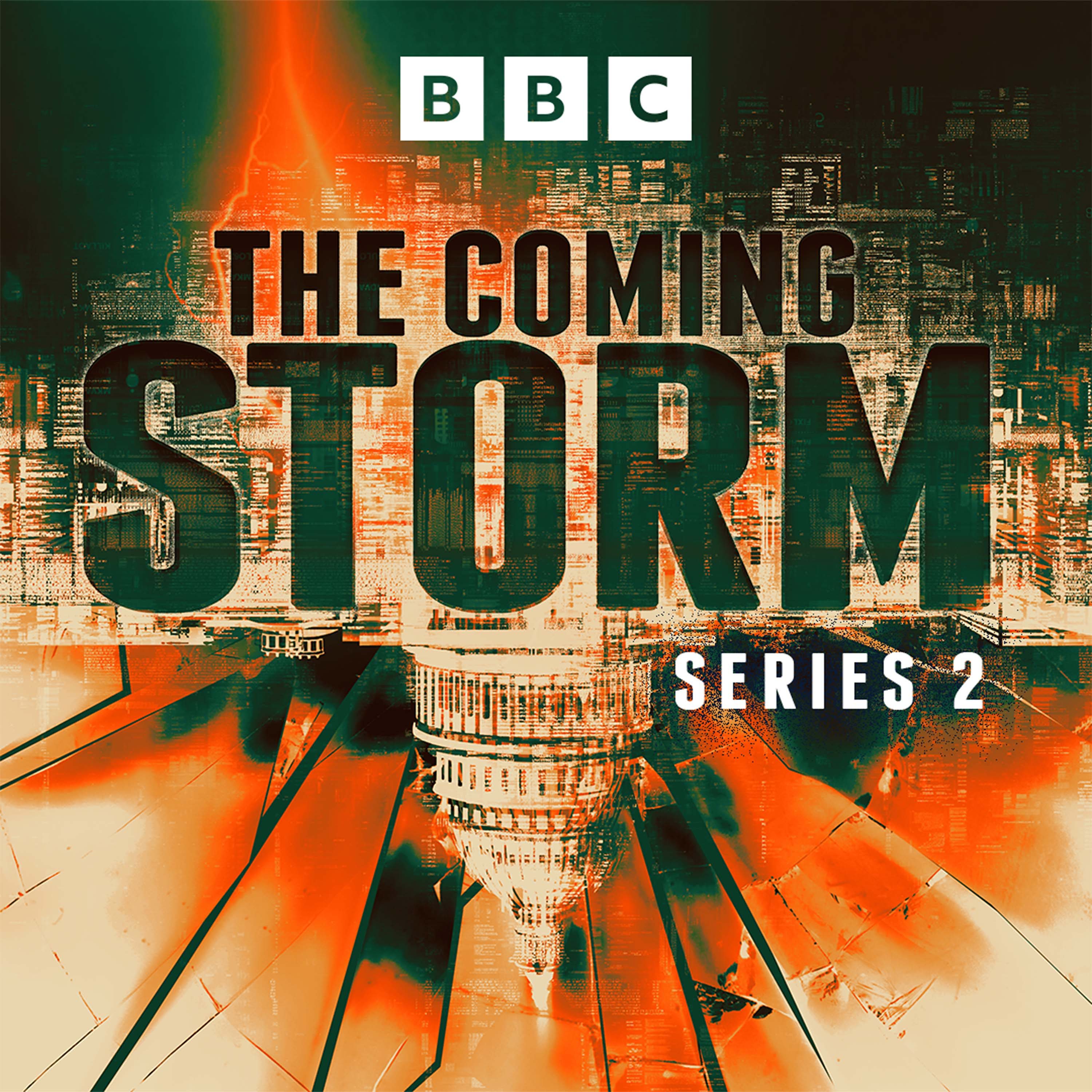
Brian's Run Pod
Welcome to Brian's Run Pod, the podcast where we lace up our running shoes and explore the exhilarating world of running. Whether you're a seasoned marathoner, a casual jogger, or just thinking about taking your first stride, this podcast is your ultimate companion on your running journey.
Join us as we dive deep into the sport of running, covering everything from training tips and race strategies to personal stories and inspiring interviews with runners from all walks of life. Whether you're looking to improve your race times, stay motivated, or simply enjoy the therapeutic rhythm of running, Brian's Run Pod has something for every runner.
Brian's Run Pod
Breast Support Essentials for Optimal Athletic Performance with Dr Nichola Renwick
Ever struggled with the bounce during a run or felt the strain on your shoulders after a game? You're not alone, and the solution might be closer than you think. Join me, Brian Patterson, and the esteemed Dr. Nichola Renwick, as we unravel the mysteries of sports bras and their profound effect on athletic performance and comfort. We dive into the art of finding the perfect fit across different breast sizes while highlighting how a well-fitted sports bra can alleviate discomfort that extends beyond the chest area. From discussing the benefits of compression bras for smaller-breasted athletes to the necessity of encapsulation bras for larger breasts, we cover it all. Tune in and discover how to combat breast pain and optimize your sporting experience.
This episode goes beyond the basics, spotlighting the evolution of sports bra design and the critical role education plays in this sphere. Learn how iconic moments like Brandi Chastain's World Cup celebration catapulted sports bras into the mainstream, influencing their marketing evolution. Our engaging discussion further reveals our collaborative efforts with the England women's football team, the Lionesses, as we conducted educational workshops and fittings ahead of the Euros. We share insights from the research group's work with the armed forces and top athletes, emphasizing the tailored sports apparel that enhances women's performance in diverse settings.
Wrapping up this enlightening episode, we underscore the universal importance of breast support in sports bras, a must for anyone engaged in physical activities. Whether you have natural breasts or have undergone surgeries, proper support is paramount for both physical performance and psychological well-being. Dr Nichola Renwick shares practical advice and five key steps for achieving that snug, comfortable fit, ensuring you're equipped to make the right choice for your athletic journey. My heartfelt thanks go out to Dr. Renwick for her invaluable insights, and for those seeking more information, be sure to visit the link to her website. Whether you're a professional athlete or a fitness newbie, this conversation is your guide to choosing the right athletic wear to support your active lifestyle.
University of Portsmouth Breast Health
Brian's Run Pod has become interactive with the audience. If you look at the top of the Episode description tap on "Send us a Text Message". You can tell me what you think of the episode or alternatively what you would like covered. If your lucky I might even read them out on the podcast.
Instagram
So you're thinking about running but not sure how to take the first step. My name is Brian Patterson and I'm here to help. Welcome to Brian's Rompod, but welcome back to brian's run pod. I'm your host, brian patterson. In the second part of my discussion with dr nicola remwick, we talk about the different types of bra and what are the five key areas to look out for when purchasing a bra stroke, sports bra. You haven't heard the first part of our discussion, then please do have a listen to the previous episode.
Speaker 2:What advice would you would you give to to women at this stage, you know, as to what's on the market yeah, so in terms of buying a sports bra, um, so I mentioned earlier about how if you were smaller breasted, or if you were larger breasted, you'd be wearing a different type of, you'd be recommended to wear a different type of bra, so for someone with smaller breasts. So smaller breasts are typically classified as a c-cup or below, and so for them, they typically find that a compression bra is suitable, sufficient enough to meet their needs, and so the compression bras are kind of the ones, you see, that are like little crop top spaces and they act to just compress the breasts against the chest wall and just hold them there, and that is sufficient enough to reduce breast movement. For these women, and then for larger breasted women, we'd recommend what's called an encapsulation bra right, okay so this is.
Speaker 2:This looks more like an everyday bra. It has two separate cups. So instead of the compression bra, which looks like a crop top with kind of one part bit of material across across the bust, an encapsulation bra has a cup for each breast, so each breast itself is supported individually and again just kind of, you know, with increasing breast size you get a larger mass and then physics dictates that then that will kind of move more, move faster during exercise activity. So it just needs that little extra added kind of support, so being able to kind of support them individually, and we've seen that that is better. And then there's a third type of bra.
Speaker 1:Okay.
Speaker 2:Yeah, which is a combination bra which has elements of both the compression and the encapsulation and that kind of. Again, larger breasted women might prefer that as well. Okay, but it's not to say if you're smaller breasted you can't wear an encapsulation or a combined bra, and if you're larger breasted you can wear a compression bra if you want to. But if you're experiencing discomfort and pain, you might be better off in one of the combination or encapsulation bras.
Speaker 1:And just thoughts across my mind is that, basically, were the areas that they would get pain? Would that, is it kind of again, is it something different to each individual, or did you find that some people would find they'd get pain by, you know, to the side, you know under the armpit or you know on the front of the body? I mean, are there any kind of generic areas?
Speaker 2:yeah, and I think in terms of breast pain there's not really. I think it's something that we're really interested in as a research group, of kind of understanding more about breast pain, because there's not really a consistent area of the breast where everyone will say if they experience breast pain, everyone will say they experience it, you know, at the side of their breast or at the bottom of their breast or around their nipple.
Speaker 1:There's not really any one area or even it could be you know one side of the body. You know that. Yeah, you know they find yeah.
Speaker 2:So there's not. There's not anything that kind of screams out at that. So we are. That is something that we are trying to investigate and interested in learning more about In terms of kind of other areas of pain that might be related to bra fit. So if you've got pain on your shoulders, that can be a sign that your bra is not supportive enough, and your straps, if they're digging in Same. If your underband's too tight, that might dig in as well and cause you some pain, and we can also see as well. You know back pain as well. If you're experiencing back pain, it might be a sign that your bra isn't supporting you enough right during activity as well.
Speaker 2:So it's it's pain and discomfort in different parts of the body, but are there any?
Speaker 1:I mean, mean, if women are going to be doing regular exercises, are there any exercises? You know aerobic exercise, so are there any exercises that they could do within the gym? Let's say, for the back to help strengthen the back, does that help? Or I don't know? Back to help strengthen the back, does that help, or I don't know? I mean, or you know, to to kind of alleviate you know any? Any movement or pain or anything like that for that?
Speaker 2:I'm not sure about that, so I'm not a clinician, so I I'm not too okay, okay, okay um yeah, all right.
Speaker 1:Okay, do you see and sort of uh, maybe I'm kind of maybe looking ahead that you know AI or artificial intelligence, could that help in terms of your research, kind of moving forward?
Speaker 2:Yeah, definitely I think, in terms of our database that we have and all the data we've collected over the years. We've got so much of it and, like I said, we've scratched the surface with being able to look at it. So being able to implement maybe machine learning through ai technologies is something that you know we'd be really interested in for kind of just being able to analyze like massive amounts of data that we have. And then we also have a branch of our research group who are investigating and developing musculoskeletal computer models.
Speaker 2:So, these are probably a bit more predictive, but you can put it in with real people data.
Speaker 2:So they've developed and created a musculoskeletal model that has breasts. It's a female specific model, it has breasts on it and then you can put in data that you've collected from participants so you can put in what their you know their breast size is and you know how tall they are like all their different kind of body measurements and then get them to get the computer to get them to run and then see how much the breasts are going to move. And then, looking at that in terms of you know, if you then add a bra to that, how is that going to affect breast movement? And so we have, we do have a branch of our research group that is investigating that, and they have I think they're currently looked at it in terms of how changes in breast mass or changes in breast size, how that then affects loading on the lumbar spine, so on the lower part of your back. So that's kind of ongoing research in our research group as well. So yeah, definitely something we're interested in.
Speaker 1:So, going with that, do you see kind of the design of the sports brand changing much, or is it something that we get better materials, better education? Could there be even much stronger design or something?
Speaker 2:Yeah, I think it's probably a combination of kind of all of that really, I think I think education is a big thing in terms of not just educating the consumer but potentially educating. You know the broad designers as well, and kind of within sports apparel design, you know, it might, in some of the combinations, encouraging them to kind of maybe pursue the design. And you know a lot of people who work in there might be males and might not be aware of, kind of you know, the challenges that women experience. So it's education not just for women but kind of for all really. And yeah, I think there is kind of advances in technology and in material design will impact bra design and yeah, I think it might be that they stay the same or, you know, we might end up with a fourth type of sports bra, completely different to the ones that are on the market just now. So, yeah, I think it's it's a really it's a. It's a field that's expanding quite a big rate at the moment, which is really good.
Speaker 1:So it means there's loads of opportunities and lots of ideas floating around, which are great and I and I think also that, um, you know the, the marketing of it, you know like I mean reading through, you know on wikipedia about the, the sports bar and how the uh, one of the ways it was kind of made not not popular but it kind of helped. But was that when I think it was in, when the usa won? I think it was the 1999 world cup and I think when they won the you?
Speaker 1:know, the, the penalty shooter, and brandy christian, celebrated by just taking a top off, whatever, and I think that kind of helped with the marketing thing, and even the euros, you know, when they score the winning goal in the extra time, sort of thing. But I suppose that all helps, doesn't it? You know that there's, you know this, the education and and letting you know that women can partake in in sports. And also you know there are, as I said, bras, bras out there for everyone, of all sizes, as it were.
Speaker 2:Yeah, yeah, it's really great and I'm glad you kind of brought up the football. So we as a research group we worked with the lionesses prior to the Euros and we like to say you know, we helped prescribe the bra.
Speaker 1:Oh, brilliant. Oh OK, I didn't know that. I didn't know that prescribed the bra oh brilliant.
Speaker 2:Oh okay, I didn't know that. I didn't know that. So, yeah, we we ran educational workshops with with the lionesses before the tournament and then we did bra fittings with them as well, and we were able to prescribe them and offer them bras to wear during the tournament, and one of those bras got quite a lot of attention oh, yes, yeah.
Speaker 1:So you must have been thinking yeah, yeah, because it was great, yeah but it's like you said, from.
Speaker 2:From that, though, and from you know, that picture that's inspired so many, you know, young women, young girls, and to get back into sport and to yeah, it's been great. And from that we, we get a lot of interest from sports clubs and you know, and these are, you know, at the elite level, all different kinds of sports, but, and also kind of local groups, community groups, you know, recreational running clubs.
Speaker 2:We've, since then, we've had such a massive increase in kind of offering them these kind of raw workshops awareness advice yeah, and I just so, so the appetite is there for it to learn and to educate everyone, so it's really great. So that that was a really great experience for us to see the impact that that had so that was brilliant, that's been a good moment, and also any.
Speaker 1:I noticed that you, you do work with the, with the army, the force of the, the armed services. That's right, because obviously, because obviously they're you know, obviously may not be as vigorous, or maybe, you know, they obviously do a very functional type of work and they need to have the right equipment for that.
Speaker 2:Yeah, exactly. So yeah, we've got again a branch in our research group that looks at the occupational population. So women who require, you know, sports bras or you know high support kind of fitted clothing or you know they wear different types of equipment. So, for instance, like police body armor and how that affects, you know, a woman's torso compared to a man's torso.
Speaker 2:And yeah, within the military, we did work with them and kind of they were really great and they've now implemented kind of recommendations that our research group did with them in terms of being able to prescribe and provide their new recruits with sports bras. And they've currently got a project that's just coming to an end which has looked at all those sports bras, which ones are the most suitable for the jobs and that that they will be doing in the army. So, yeah, it's been really great and it's yeah, it's great to see in a big organization, big organizations like that kind of really taking an interest and really seeing how that can impact them and the people, that that they're their employees essentially. So that's really great yeah, yeah, yeah.
Speaker 1:So are you? Are you currently doing work with the olympic athletes or is that you know because, obviously, being an olympic year or whatever, I mean you know? Do you? Are they you know from different sports or do you find there are you may be doing work with some athletes from one particular sport.
Speaker 2:For that I'm not sure yet.
Speaker 1:Okay.
Speaker 2:I'm not sure what plans are for that, but we did for the Tokyo Olympics.
Speaker 1:Oh, okay.
Speaker 2:We did previously. So that's what we did with the Lionesses. We did the same with the Tokyo Team, gb Olympic and Paralympic teams. So we did a breast education workshop with that and then did some bra prescriptions and bra fittings with them as well.
Speaker 1:So that sounds really exciting. So because obviously it's something that's you know, your research is obviously ongoing and then you're just finding out new things. I mean, is there anything? I mean it's been very interesting talking to you, nicola, on the podcast. Is there anything you would like to add to what we've said before?
Speaker 2:I think just to really encourage everyone to not be afraid to talk about breasts and any problems that they're having. Even if you're talking about it amongst your friends, you, you know or your family members, like, without a doubt, what someone else will have experienced as well, you won't be alone. So, yeah, it's almost like break the taboo of talking about boobs, like it's all right to talk about them and yeah, and you know, there, there, there will be a solution for you.
Speaker 1:And just kind of, you know, stick in there, try different bras and see what works for you is there enough, you know, help, let's say, for someone who is maybe experiencing pain, discomfort, or you know they're not getting the right, you know, in terms of going to going to a shop or going to manufacturers and asking for help and guidance. Do you think?
Speaker 2:um, there can be in certain shops. Some will be kind of more specialized than others. Yeah, pending on it, and it can kind of frustratingly be a little bit of trial and error with it sometimes, and it's because I always say this buying a bra is the same as buying a pair of jeans, depending on you know the way that you know each brand does their sizing or the way that they're manufactured. You know you could be a different size in a different store. So it's just keeping that in mind.
Speaker 1:And it can be if you try a bra on and it doesn't feel right, but it's your size, just ignore the fact that it's your size and then try another size on and see if that will fit better, right kind of something just popped into my head is that Do, let's say, someone who may, for one reason or another, have had cosmetic surgery.
Speaker 1:You know whether it's for cancer or whatever, do they have the same issues as someone you know who has natural breasts in terms of you know, let's say, if they're looking to take up sport?
Speaker 2:Yeah, I mean they will do. They'll still require breast support. Yeah, sport, yeah, I mean the, the ability. They'll still require breast support. Yeah, so that's it. And it might be so someone who has had, like, breast augmentation will still require, you know, a sports bra.
Speaker 2:And then it's different when it's maybe for, you know, cancer surgery, if it's been a mastectomy, those requirements might be different and there are some products out there as well that can help in terms of, you know, if you've had a like a one-sided mastectomy, so maybe just on one side, there are products out there that you can get to kind of maybe like fill the cup size out, yeah, to kind of help give you a bit more support there. So there are options out there, yeah, but it's still important to have the support. And if you are wanting to get into exercise after you know having surgery on your breasts, like still, you know, persevere and find a sports bra for you, yeah it's obviously yeah, I suppose I'm like that.
Speaker 1:The message is is obviously just to you know, educate yourself. And then to you know, talk to to others about it and then you know, do persevere with the exercise, because obviously that's going to help you health-wise, and then also to try on different, different products. Is that right?
Speaker 2:yeah, yeah, that's it. And, like I said, like so, even even some of the team gb athletes that we worked with, they they discussed, you know, they they had problems with breast pain and feeling that their breasts got in the way of them being able to perform. But then when we prescribed them with, you know, with a kind of properly fitting bra that fit their needs, and after giving them the education on what a properly fitting bra kind of should do and should be acting to do, you know, they said that they were happier and that they saw an improvement in their performance. And it is. It's not just a, you know, biomechanical or physiological performance, but also psychological impact as well. It's helped you make you feel more confident and in exercising and in moving your body yeah, that's.
Speaker 1:That's that's great, and what I'll probably do is I'll probably a link do a link to your website on the podcast when the podcast comes out. But I'd just like to take this opportunity to thank you really, really grateful that you agreed to come onto the podcast.
Speaker 2:If there's anything else you'd like to say, like to finish it off, the only thing I could say that maybe is to just for your listeners to go through maybe the steps of looking for the five steps we kind of briefly touched on earlier for bra fitting. So if they're wanting to go out and kind of take my advice and go out and find find a new bra for themselves, I can kind of talk through maybe some of the steps.
Speaker 1:Right, can I help them? Yeah, okay.
Speaker 2:Okay, yeah, the steps right help them yeah okay, okay, yeah, so the first step that we would say is looking at the underband.
Speaker 2:Yeah, so the underband is actually where the majority of the support for your breasts come from.
Speaker 2:So a lot of people think it comes from the straps, but actually the straps are just there to hold the bra onto your body.
Speaker 2:The underband is almost at almost like a shelf, to kind of like support your breasts from below right. So you want to make sure that that's level around your chest wall so it's not rising up at the back, and you also want to make sure that it's, if you stand and you put your hands up in the air, it's not moving up okay from your body. So that that would be a sign that it's too big. And you also want to make sure that if you give it a little pull, a little tug at the side under it, that it's got no more than a five centimeter give. That would suggest it's too big. And then if you can't get your fingers under there, then it's too small. So then think about changing your size of underband. Then we go on to the straps. So again, the straps are adjustable and again so you want to adjust them and this might be different on each side. They might not be at the same length on each side.
Speaker 2:And again, you want to make sure that there's not more than a five centimeter pull when you kind of stick your finger up and pull it up off your shoulder. You don't want more than five centimeters. You want to tighten it up a bit. And then also you don't want it to be digging in. So if you can see it kind of pressing into your skin and starting to leave kind of a mark, you want to kind of loosen that up a bit.
Speaker 2:And then we have the centre part of the bra. So this little bit it's compression bras won't have this, but an encapsulation bra will and an everyday bra will. So you want this to be sitting kind of in between your breasts and you want it to sit kind of flush against the chest wall, so lying flat against it. And again, if it's kind of pulling away from the chest wall and you've got a gap, that can be a sign that your bra is not the right size. So it could either be that it's not a sign that your cups are a bit too small, because it's kind of pushing, the breasts are kind of squished in the cups and that's pushing the bra off the chest wall.
Speaker 2:So you want that to lie nice and flat against the chest wall. Then we have cups. So the cups you don't want any bulging outside of the cups. So you, if you've got bulging, if you've got breast tissue kind of spilling out of the cups at the top or even round at the side, that's a sign that you need to go up a cup size. And then if you've got it on and you've got wrinkling in the fabric, that can be a sign that the cups are too big. So you, you want to go down the size and you really want the cups to have quite a nice snug fit over the top. So you don't want them, you don't want your kind of breasts moving around inside them too much, you want it to sit quite nice and flush against them.
Speaker 2:Then you would have the underwire, which is the last part. So in terms of an underwire, if you don't, if you don't like an underwire, that's fine. There's nothing to say that you have to wear a bra that has an underwire. I think that's quite a love or hate relationship when we have an underwire bra. But we like to use it to help us look at bra fit. So the underwire starts around at the side and comes all the way around the bottom and up to the middle of the breast and you want all the breast tissue to be sitting within that boundary that the underwire creates. So if that underwire is sitting on top of your breast tissue then that can actually cause some pain and discomfort and that's a sign that you need to go up a cup size as well. So that's a nice guide. To kind of see if your breasts are kind of sitting within the cup properly is to use that underwire as a guide okay, okay.
Speaker 1:And then I mean, for sports bras is the material pretty much uniform. It's the same. Is it for all, for every?
Speaker 2:yeah, so it would, we'd say, to go through those steps for a sports bra as well as as best you can.
Speaker 2:So, like I said, with the compression one you don't have the separate cups and, you know, not a lot of sports bras have underwires either, so you wouldn't be able to use that. But definitely in terms of the underband and the straps and again, adjustability. We love adjustability in the underband and the straps as well, and then we've also seen that in terms of kind of the cups and coverage for a high support sport sports bra kind of the higher the neckline the better okay so yeah, so we've seen something as much as pretty much.
Speaker 2:For every one centimeter higher the neckline is, we see a one percent reduction in breast movement okay.
Speaker 1:So it's kind of sort of about your sternum, is it or something around here they come in varying.
Speaker 2:They come in varying styles and in varying ways, and it is. It's just if you're looking for a high support bra and one that has a higher neckline, that kind of comes up. Yeah, it's probably somewhere around your sternum. It's probably going to offer you more support than one which is a lower impact line. Okay.
Speaker 1:Okay, well, that's fantastic. Thank you very much. Thanks very much for coming and obviously you've provided a lot of information in terms of what you know, my my listeners can take away from it, but, um, but, thank you very much for coming on the podcast all right.
Speaker 2:Thank you for having me. We'd love to kind of get the word out and share a thing about what we do. So it's been great, great to have you.
Podcasts we love
Check out these other fine podcasts recommended by us, not an algorithm.

Life Changing
BBC Radio 4
Tech Life
BBC World Service
Runner's World Podcast
Runner's World UK
Buzzcast
Buzzsprout
Newscast
BBC News
Understand
BBC Radio 4
Cyber Hack
BBC World Service
Ghost Story
Wondery | Pineapple Street StudiosDiz Runs Radio: Running, Life, & Everything In Between
Join Denny Krahe, AKA Diz, as he talks with a variety of runners about running, life, and everything in between.
Uncharted with Hannah Fry
BBC Radio 4
The Global Story
BBC World Service
The Coming Storm
BBC Radio 4
Lives Less Ordinary
BBC World Service
Do Epic Shit Today Podcast
Hannah Mulhern
The Rest Is History
Goalhanger
